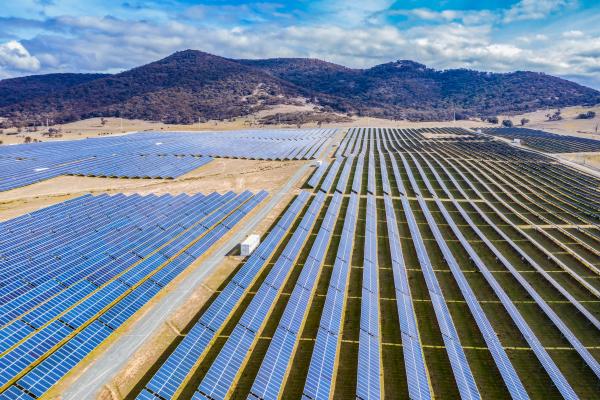Steve Tritton / Shutterstock

Marina Yue Zhang, Associate Professor – Research, Australia-China Relations Institute, University of Technology Sydney |
| Professor Roy Green, Emeritus Professor and Special Innovation Advisor, University of Technology Sydney |
| Professor Mark Dodgson AO, Emeritus Professor, University of Queensland; Executive-in-Residence, University of Oxford; Visiting Professor, Imperial College London |
This article appeared in the East Asia Forum on November 1 2024.
Australia’s industrial policy is undergoing a significant transformation with the introduction of the Future Made in Australia Act (FMiA). This policy aims to reposition the country as a key player in global supply chains, particularly in critical minerals, renewable energy and advanced manufacturing. It marks a departure from neoliberalism towards a mission-oriented approach, reflecting broader global trends over the past decade.
Historically, industrial policies have been instrumental in supporting economies — such as Japan, South Korea, Taiwan and more recently China — catch up with the developed world. These nations have successfully targeted specific sectors with state-directed investments in technologies and capabilities, complemented by government-led export strategies.
Major industrial nations, including the United States, European Union and United Kingdom, are adopting similar interventionist industrial policies in response to geopolitical competition. The United States’ Inflation Reduction Act (IRA) embodies this shift, offering substantial subsidies and investments aimed at reshoring manufacturing and reducing reliance on foreign suppliers, particularly China. The European Union’s Critical Raw Materials Act seeks to secure access to essential minerals for the green transition, while the United Kingdom is implementing policies to enhance its industrial competitiveness post-Brexit.
These policy shifts reflect a collective aim to mitigate vulnerabilities highlighted by supply chain disruptions during the COVID-19 pandemic. They represent a break from the so-called Washington Consensus, which advocated for economic growth through reduced government intervention and trade liberalisation.
Unlike these other industrialised nations, Australia’s FMiA does not incorporate significant tariff increases or protectionist measures. At the heart of the FMiA is an ambition to reduce Australia’s dependence on commodity exports and transition toward high-value-adding industries that are globally competitive and sustainable. The policy emphasises subsidising local manufacturing capabilities, particularly for the green energy transition.
But scepticism surrounds the FMiA’s efficacy. Critics warn that while its intentions may be commendable, mission-oriented industrial policies may lead to unintended consequences, especially if they favour specific sectors at the expense of others. Investing in areas where Australia lacks comparative advantage might expose the country to external economic pressures and competition from countries with more cost-effective suppliers.
This policy ultimately suggests a discontinuity with Australia’s liberal economic past, particularly the reforms of the 1980s and 1990s that opened up the economy and allowed its comparative advantage in commodities exports to flourish.
One significant risk Australia faces is becoming ensnared in a global arms race of industrial subsidies. As the United States and China funnel billions into strategic sectors, smaller economies like Australia may feel pressured to keep pace. This could create a cycle of escalating subsidies that strain public finances, incurring considerable opportunity costs.
A key difference between Australia and other developed countries lies in market size. The United States and European Union can sustain ambitious industrial strategies which can thrive on their extensive downstream markets. In contrast, Australia’s limited domestic market makes it heavily reliant on exports.
As an upstream supplier of mineral products, Australia faces significant constraints in maintaining its export markets due to its reliance on high-value processing technologies and facilities, predominantly controlled by Chinese interests, before accessing downstream markets, where China controls a substantial share. This unique position in the global value chain limits Australia’s negotiating power and exposes it to geopolitical risks, particularly amid the ongoing rivalry between the United States and China.
Aligning more closely with the United States may seem advantageous, but this strategy does not inherently enhance Australia’s competitive edge in mineral processing. US initiatives, such as the IRA, often stipulate that producers cannot exceed a certain level of Chinese equity to qualify for incentives. This underscores the complexities of navigating foreign direct investment in a politically charged environment.
Australia’s aspiration to develop downstream processing capabilities is hampered by high labour costs and ongoing reliance on global supply chains. This could further entrench dependency on foreign technologies. Australia’s industrial policy has long promoted research and development through tax rebates and subsidies. During the resource boom, this led to innovation in mining extraction technologies that yield high returns. But Australia remains dependent on imports of heavy machinery and equipment, let alone mineral processing technologies.
Compounding this issue, emerging competitors, particularly the BRICS+6 nations, are actively developing their own supply chains, leveraging both their mineral resources and China’s advanced processing capabilities and investments in infrastructure.
The FMiA in its current form also risks increasing regional disparities, as resource-rich states and established firms may benefit disproportionately from subsidies, exacerbating inequality across Australia. This could create a scenario where certain regions thrive while others lag behind, particularly areas with fewer natural resources or less-developed firms.
Australia must craft a more inclusive and balanced industrial policy that integrates both vertical (sector-specific) and horizontal (economy-wide) programs.
The FMiA adopts a vertical approach by targeting sectors critical to national interests, especially in alignment with the interests of Australia’s allies. This focus is particularly important in addressing economic security and environmental considerations that the market may not effectively resolve.
But it is essential to implement horizontal programs that foster a conducive business environment across all states and sectors. This includes improving infrastructure, enhancing workforce skills and promoting innovation. Investing in education and training, along with enabling technologies such as artificial intelligence, robotics and cloud computing, could help equip the workforce with the necessary skills and empower small and medium enterprises and entrepreneurs to benefit from these initiatives.
Above all, developing innovative strategic partnerships will be essential for sustainable growth and prosperity. Collaborative efforts with global stakeholders can enhance Australia’s competitiveness and adaptability in a rapidly changing global landscape.
Australia must strike a balance between state intervention and market forces, particularly in addressing the energy transition. Relying solely on the government to determine which sectors should be the ‘moonshots’ is risky and may lead to unintended consequences.
Authors
Dr Marina Yue Zhang is Associate Professor – Research at the Australia-China Relations Institute, University of Technology Sydney.
Professor Roy Green is Emeritus Professor and Special Innovation Advisor at the University of Technology Sydney, where he was Dean of the UTS Business School.
Professor Mark Dodgson, AO is currently Emeritus Professor at the University of Queensland; Executive-in-Residence at the University of Oxford; and Visiting Professor at Imperial College London.


